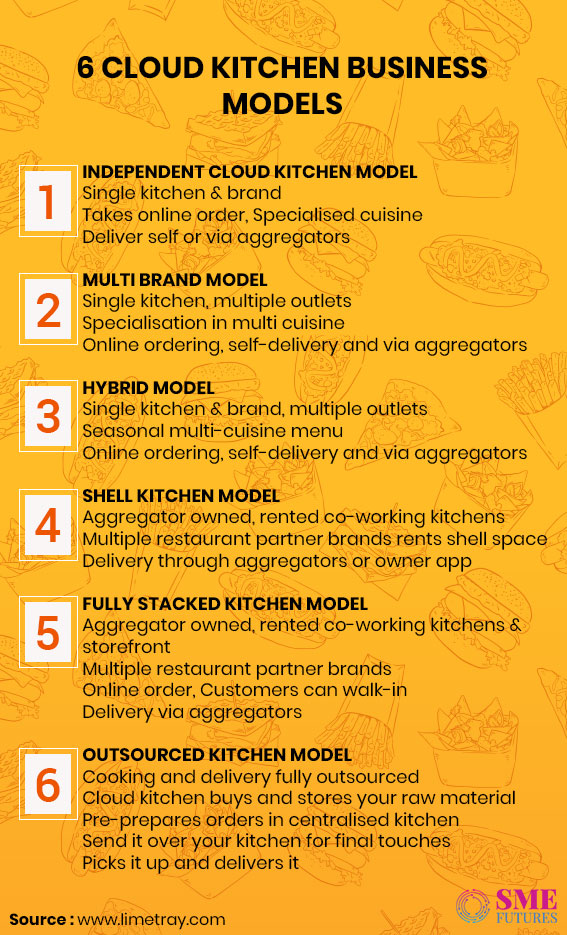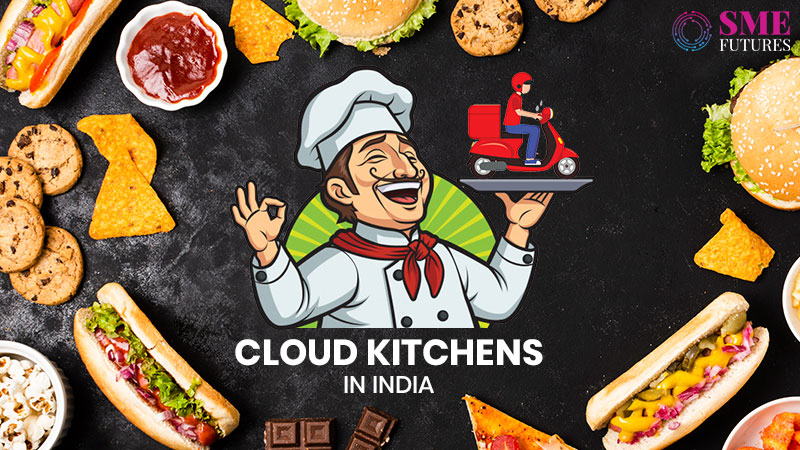Few years back, Mumbai based Bansari Bhagat took a break from home-based small business when it became difficult for her to juggle between a full-time work and a small business. After a brief hiatus, Bhagat restarted her cooking business called, Trupt -Maa ke haath ka Khana during the lockdown. Her primary intent behind starting this was to ensure safety of customers while providing them with several delectable meal alternatives at the comfort of their homes.
Bhagat tells, “Since the lockdown was imposed, everyone moved to their homes including house helps and cooks. Restaurants were shut which made ordering food from restaurants tough for people staying away from home. This gave me a chance to reflect on my choices. I decided to go back to my cooking and to deliver homemade goodness and love to people.”
For home cooks like Bhagat, lockdown proved to be the right opportunity to convert passion into cloud kitchen businesses. With the closure of restaurants compelling prospective diners to eat at home, takeaway meal options are on the rise in India. Cloud kitchens are hence best suited to the demands of socially distanced customers than conventional restaurants.
Cloud Kitchen as a survival strategy
For restaurant industry, past few months were very rough. Mass closures made numerous people jobless and revenues tumbled to zero. In such scenario, not only micro brands but big marquee F&B names have started adopting the cloud kitchen business model. Cloud kitchens are backend equivalent to commercial cooking spaces but without any physical dining areas.
These entities can be owned by a brand or a third party working with various brands. They only cater to online orders and deliver through delivery companies like Swiggy or Zomato. Though still a niche segment, it is projected to grow by $2 billion industry by 2024 in India, according to RedSeer Consulting. However, the larger question is will it help in reviving restaurant industry.
“All you need is a minimum 150 square feet home kitchen or a commercial premise and you are good to go. It is a minimal investment concept, so numerous people can be a part of the industry and make a better living,” says Clyde Monteiro, CEO of K Sera Sera Miniplex Ltd.
Cloud kitchens are hence becoming a perfect survival strategy of every restaurant.
Monteiro further tells, “We were just climbing the peak of success with Chhotu Maharaj miniplexes when the pandemic hit and forced a lockdown on businesses. There had to be a survival strategy, something to provide to our existing employees as well as to create more jobs. Hence, we stepped into cloud kitchen which is now proving to be one of the best solutions.”
Another restaurant player JSM Corporations which runs Hard Rock Café has launched two new cloud kitchens namely Plus 91 and Ginger Tiger during the pandemic.
Akanksha Chaudhary, Assistant Director—Marketing & Sales, JSM Corporation says, “Dark kitchens are helping restaurateurs to maximise efficiencies, increase reach to more customers, and implement an effective space utilization. On the other hand, customers are enjoying a variety of options such as price benefits and value-added services because of increased competition.”
Ginger Tiger and Plus 91 which serve Asian and street food respectively have picked up business in last three months since their inception. She adds, “Ginger Tiger and Plus 91 are brands that had physical spaces a couple of years ago. They enjoyed their share of popularity back then and bringing them back helps them in activating their old customer database. They are both unique in terms of their offerings but are pocket friendly brands.”

Quick service restaurant in the central suburbs of Mumbai, Achija has also decided to launch cloud kitchens. Tapan Mange, Owner – Achija elaborates, “Never in my life I have seen such scaled disruption in F&B segment. We intend to build cloud kitchens over the course of coming months, as they are cost-effective and scalable. Extending deliveries via kitchens will surely bolster dying F&B sector and seems like the only viable plan bringing maximum productivity.”
Mange further informs that they are planning to expand and reach pan-city and even to retrofit operations with the ability to deliver multiple brands in a hub-and-spoke manner. “This appears the need of the hour as decline in dine-in sales is obviously due to increased social-distancing. It is good to consider home delivery as an integral aspect of the restaurant now,” he adds.
Home delivery – A preferred alternative by all
India’s online food delivery industry is skyrocketing these days. As per the latest survey of Zomato, the industry has recovered nearly 80 per cent of its revenue from the pre-COVID phase. Only 8 to 10 per cent dining in is available.
Approximately 88 per cent and 91 per cent of restaurants are still shut in Delhi-NCR and Chennai respectively. Zomato survey further reveals that restaurants in residential areas were doing 50 per cent better business by delivering food than those in commercial areas as consumers have switched their expenditure from eating out to home delivery.
Another survey in mid-September by LocalCircles on how people have consumed restaurant food in past two months states that 28 per cent citizens opted for online food ordering to get a home delivery. Further according to the survey, 34 per cent citizens are willing to order food online rather than dining out for the next two months.
The surge in food delivery industry and consumers preference for ordering food online has therefore led growth of cloud kitchen. Presenting his views on this, Monteiro adds, “The tech-savvy generation finds it convenient to order food online and it suits their fast-paced lifestyles too. Though a cloud kitchen stands for online ordering and delivery, but it has acquired a whole new meaning during these tough times when most restaurants have shut.”
Rise and rise of cloud kitchens
It can now certain that people are moving away from dine in restaurants. This is going to reinforce the cloud kitchen market not only in India but also across the world. There are various reasons for that. Firstly, people have become health conscious since the outbreak of the pandemic.
Hence, cloud kitchen players are registering significant growth every month. For instance, Homefoodi, a home food delivery app that aggregates cloud kitchen stores grew by 50 per cent in past few months. Similarly, Chhotu Maharaj is projecting revenue of Rs 40 crore and has signed 30 franchisee deals through the cloud kitchen business.
“Apart from partnering with Zomato, Swiggy and EazyDiner as aggregators, we will soon be launching our own food ordering app Chhotu Maharaj which will make offer a more customizable experience to the customer,” said Monteiro. The entertainment conglomerate, K Sera Sera has planned for 108 outlets across Mumbai.
On completion of this, they will further scale up the number of franchisees in 70 other cities of India based on the demographics of those cities. “Once the pandemic crisis is over, we expect a growth of more than 25 per cent adding to the cloud kitchen business, which will surely lead to employing people from skilled and unskilled sectors,” he adds.
Ginger Tiger and Plus 91 are also seeing great growth since its inception. Chaudhary tells that since both ventures were already established dine-in spaces, customers came back to them. She informs, “Our next step will be to take both brands to more customers in different localities within Bangalore, and thereafter to other cities as well.”
Current trends and opportunities galore
The entry of food tech start-ups has led to massive transformation in the operations of Indian food industry. Setting up a cloud kitchen is a minimal expense affair as compared to setting up a restaurant. The setup cost for a medium-sized cloud kitchen is around Rs 5 lakh. This is attracting eyes of new players and this includes home cooks too.
Chaudhary of JSM Corporations also feels the same. She claims, “We certainly believe that home chefs have got great scope in terms of scaling up businesses in times such as these. This further boosted new portals and plug and play kitchens that help in promoting the concept.”
Cloud kitchen entrepreneur, Bansari Bhagat believes that this concept has given her an opportunity to deliver home-cooked delicacies without incurring the cost of a conventional restaurant. Bhagat in near future wishes to expand business and collaborate with potential partners particularly women.
Bhagat says, “I wish to expand our kitchen in few years and to have more women on board. It will only be a team of women who are driven and who want to do something for themselves instead of feeling sorry. I want to become a pathway for other women towards their dreams. Hence, I expect to grow it into a bigger chain of delivering more dishes in the longer run.”
Managing a cloud kitchen requires an integrated tech set up for accepting orders, processing payments, and efficient kitchen management. A point of sale (POS) system to accept orders from various channels, such as delivery aggregators and online ordering platforms are other key requirements in the setup.
Another facet of virtual kitchen model is that one can operate multiple brands from one same kitchen. For instance, Bhagat has sub-branch named Celebaketion for home baked goodies such as cakes, pastries, chocolates, cake jars etc.
Rise in utilisation of independent cloud kitchens by grocery stores, restaurant brands, and multi-branded restaurants have augmented the growth of the cloud kitchen market. The hectic work schedule of consumers along with the increasing demand of international and fusion cuisines such as Korean tacos, ramen burgers etc are also boosting the growth of cloud kitchen.
“It is critical to build trust with customers when one launches new brands. Focus on awareness is critical and price range must also be considered to ensure volume in business. It helps in sustenance of such models,” adds Chaudhary as use of social media becomes a tool to promote businesses.
Hurdles while opting for the business model
Cloud kitchen model has several advantages such as low operational costs, competitive pricing, simplified and focused menu, no overhead expenses, and great food quality. Despite the competitive advantages, cloud kitchens lack in some areas as a business model. These are dependent heavily on food aggregators for orders which provide a delivery platform for them.
Choosing the right platform can be daunting since it gives a cloud kitchen a visibility and recognition.
JSM Corporation’s Chaudhary tells, “Gaining visibility is one of the main challenges primarily within the delivery portals provided there is increasing competition and database control.”
The increase in number of fine-dining and quick service restaurants such as Subway, McDonald, Starbucks, KFC, Pizza Hut, Restaurant Brands International, and Dunkin Donut etc can also be a prominent factor that can hamper the growth of the cloud kitchen market significantly.
These quick service restaurants have a global presence along with high amount of liquidity owing to which smaller cloud kitchen are unable to compete with these giants. Moreover, they have large product offerings, world class infrastructure, along with best and timely food delivery services, which attracts consumers. This affects the survival of cloud kitchen.
Another challenge for cloud kitchen owners is astronomical technical costs, as they thrive on tech solutions. This can be burdensome as the cloud-based solutions can range high as the real estate costs and monthly subscriptions are not very cheap for a new-entrant in market. Hence, the expenses end up being similar to that of traditional restaurants. However, the number of the users is severely restricted since these outlets do not provide the dine-in facility.
Often inventory management for orders and wastage of food can be the issue. The restaurant as service players should invest in appropriate management solutions and logistics for this. Maintaining hygiene is also of utmost importance that needs attention. There have been many cases reported on social media wherein the food served to customers was unhygienic.
In cloud kitchen environment any chosen space needs to be hygienic and should pass FSSAI norms. Also, one negative review can tarnish their image which in turn can damage their business. These above-mentioned challenges are mostly associated with the business model at work. But there are other issues which can make market suffer in the current scenario.
Pointing out these issues, Mange of Achija explains that labour costs will go up sooner, as jobs are available now but only for local workers. Apart from that operations now need additional sanitisation and hygiene measures, be it bringing sourcing material into the kitchen or delivering food to the final consumer.

“So, workforce is going to be expensive to great extent. Indian urban cities would have never imagined it. Reinforcements in the teams on safety and hygiene to scrutinize our sources or our delivery partners for hygiene will although keep every operation at its best but will add to production costs,” he says.
Mange adds, “In such a scenario, restaurant owners bear risk especially when there is shortage of revenue. Behind the curtain, other worry is of giving up of the physical site. It may or may not be a good decision for many. One should carefully place where renowned players can take a step ahead to set benchmarks for its hygiene, packaging, quality, logistics and pricing.”
Cloud kitchens as replacement of conventional restaurants
Cloud kitchen evolved during 2017 in India and 2020 is the year of their upheaval. One can certainly say that the restaurant industry has undergone a major transformation with the concept of cloud kitchens especially in the current scenario.
These kitchens are helping to serve a niche market which earlier was not given much significance. Chaudhary opines, “Customers tend to order more during weekday afternoons, and this will help in compensating for lean period sales for restaurants. Besides, restaurateurs can maximize their efficiencies using dark kitchen models and shared workforces.”
Monteiro adds that cloud-kitchen model had opened new avenues in the food business like e-commerce. “The mass has already accepted the idea and have got comfortable with it using the digital mode for ordering food through online aggregators. This has opened new avenues for the concept of cloud kitchen to reach to wider and more accepting consumers,” he concludes.
Cloud kitchens are not here to replace restaurants, it is just an additional food serving avenue for consumers. Only people who want to spend quality time with friends, colleagues, and family members will visit restaurants. For consumers who wish to enjoy and celebrate at home, cloud kitchens are available.
These are two different venues altogether and none of them are here to replace each other. With direct competition with aggregators, new players are expanding the overall market. It fairly seems possible that in the future even lower-end traditional restaurants also will migrate to new norms and methods. Cloud kitchen hence seem a viable option for its enhanced efficiency in reach of customers, costs, time, ease, and regulated operations.











